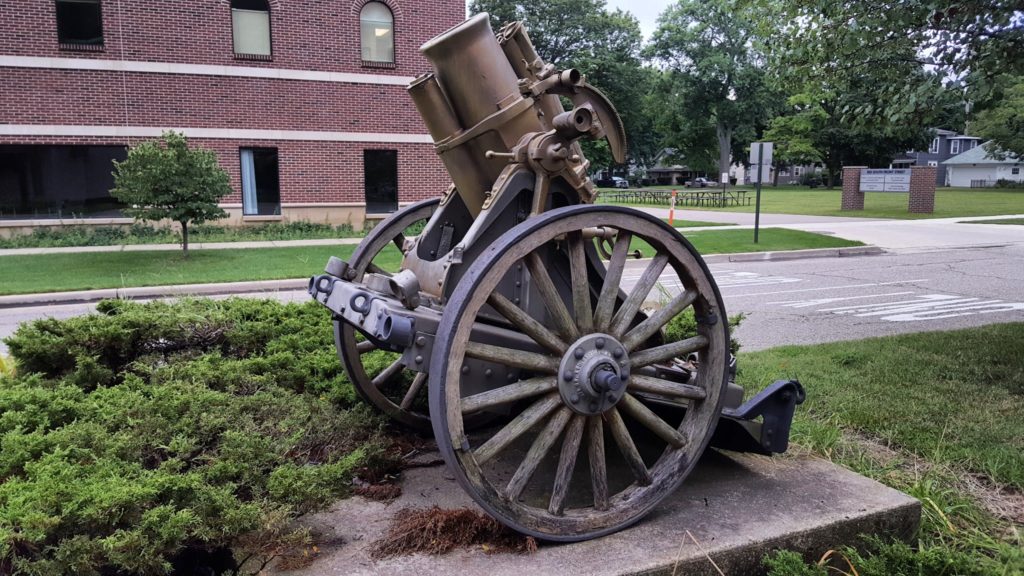My wife and I were walking around downtown Dowagiac, MI, when I spotted a memorial with an odd little piece of artillery sticking out above a bush located by the intersection of South Front and Main Street.
I walked over and realized I had no idea what it was. Given it was a WWI monument, it had that “WWI Look” and the wooden steel clad wheels – even I could figure out it was a WWI piece but what was it? Somebody had spray painted part of it with some brass/bronze paint that was fading but it was actually in surprisingly good shape.

My first thought was that it was some kind of short barreled howitzer but didn’t turn up anything. I then realized it might be some type of large mortar so I searched on WWI mortar photos. Being a visual person, I can scan a ton of photos fast and I found it pretty quick. It was an early generation Imperial German 17 cm mittlerer Minenwerfer (17 cm mMW a/A) made by Rheinmetall.

These large mortars were for destroying fortifications in trench warfare. Interesting minenwerfer means “mine projector”. About 2,360 of them were made between 1913 and 1918. Only 150 were available at the start of WWI.
The minenwerfers played a critical role in destroying fortifications – notably those containing machine guns and artillery as well as clearing field obstacles such as barricades and barbed wire.
They were compact but at 525KG (about 1,157 pounds), they were difficult to maneuver in a rush.
As far as I can tell, the Dowagiac minenwerfer is a 17cm mMW a/A with the last meaning Alter Art which means it is the early model before they increased the barrel length in a newer model known as the 17cm mMW n/A – with the last part meaning Neur Art – or the “new alteration”


The next photo caught my eye due to the Rheinmetall logo that I also have on HK G3 magazines made my Rheinmentall.




The monument is for the men who lost their lives in WWI from Dowagiac and also Cass County. Note the quote “It is an investment not a loss when a man gives his life for his country”.

I can’t help but wonder how the German mortar wound up in Dowagiac. I didn’t see a plaque anywhere but hope to research it more some day. I also hope they preserve it. Unless I missed it, the mortar is standing on its own wooden wheels and it would be a shame if it fell.
In case you are interested, here are some great resources to learn more about the 17 cm mMW a/A:
The following page has GPS coordinates and names of the decesed:
Here’s a Google Satellite View of the WWI Memorial – it where I put the red circle:

Here’s the link to the Google Maps page – click here.
If you find this post useful, please share the link on Facebook, with your friends, etc. Your support is much appreciated and if you have any feedback, please email me at in**@*********ps.com. Please note that for links to other websites, I may be paid via an affiliate program such as Avantlink, Impact, Amazon and eBay.
Like this:
Like Loading...






















































































